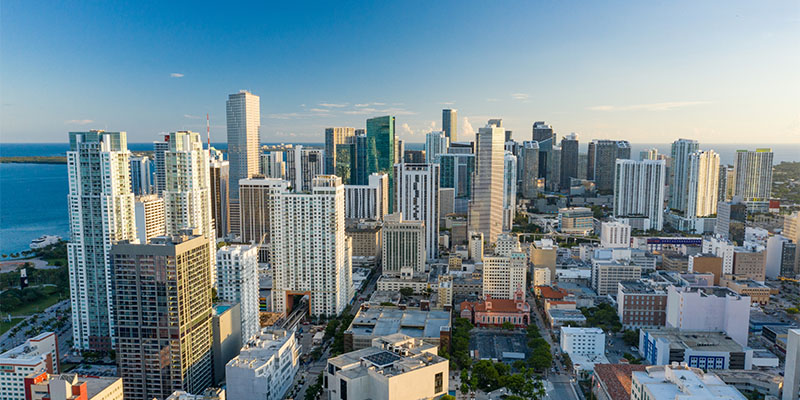We will all remember the year 2020 for innumerable reasons. The coronavirus pandemic, historic unemployment levels, a highly divisive election, and civil unrest all shared the headlines in a year none of us will soon forget.
2020 was also the year that many office employees and their employers discovered that they could complete their responsibilities remotely, as COVID-19 protocols limited face-to-face contact and emptied workplaces. Yet as the U.S. returns to normalcy with improved pandemic procedures, antiviral technologies and a rising vaccination rate, offices are once again filling with employees. In Southwest Florida, where our firm is located, we are seeing a resurgence in commercial office space.
When the pandemic shut down offices across the U.S., millions of jobs were lost either temporarily or permanently. In just two months during the second quarter of 2020, 2.86 million office-using jobs were lost, part of the biggest decline in the history of U.S. payroll employment. Since then, well over half of those jobs have been recovered, and Cushman & Wakefield projects that the office employment market will have fully recovered by July of this year.
The pandemic push to work remotely left many people wondering if traditional offices would ever truly return once the world regained a sense of normalcy. While the work from home trend certainly helped many organizations discover new efficiencies, some employers are rediscovering the purpose of the office. While technology has allowed business leaders to manage teams remotely, smartphones, notebook computers and virtual meetings have not been able to simulate other benefits of working in an office environment.
While many remote employees were productive in their duties, a 2020 Cushman & Wakefield survey found half of U.S. employees who worked from home during the pandemic struggled to feel connected to their company culture, and more than one-third felt like they weren’t learning while working remotely. As a result, the purpose of today’s resurging offices has shifted away from traditional management command and control towards innovation, knowledge-sharing and productivity, as well as creating social and cultural connections.
What does this mean for the commercial property market? Office properties are suddenly hot again. While construction ground to a halt during the pandemic, the demand for office space has continued to build, especially in areas that had low inventory before the pandemic. One such area is Southwest Florida, which currently has the hottest office market in the entire state. While Tampa and Miami have office vacancy rates over 15%, more than 91% of Southwest Florida offices are filled with tenants — tops in the state. And although office rents have increased in Southwest Florida, the average rent of $19.34 per square foot is dwarfed by Orlando’s $24.36 and Tampa’s $29.00 average, and completely overshadowed by Miami’s average asking rent of $41.48.
Southwest Florida’s relatively low rent and vacancy rates have created a landlord-friendly market which will continue to boom as the economy improves. With no large-scale speculative office projects under construction in our area, the demand for office space will continue. New businesses are already eyeing our region favorably in terms of cost, and our area’s rapid population growth over the last year will provide more available employees for companies relocating to – or expanding in – Southwest Florida.
Florida was one of the first states to reopen after COVID-19 restrictions shut down most of the U.S., and businesses in Southwest Florida were eager to get back to their offices quickly. As the rest of the nation loosens restrictions and transitions back to traditional workplaces, the Southwest Florida region provides a reason for optimism in the commercial office property market. Demand for office space has continued to grow while inventory has remained stagnant, creating a desirable environment for builders and investors. As our country continues to reopen, more markets across the U.S. may soon find themselves in a similar position.














